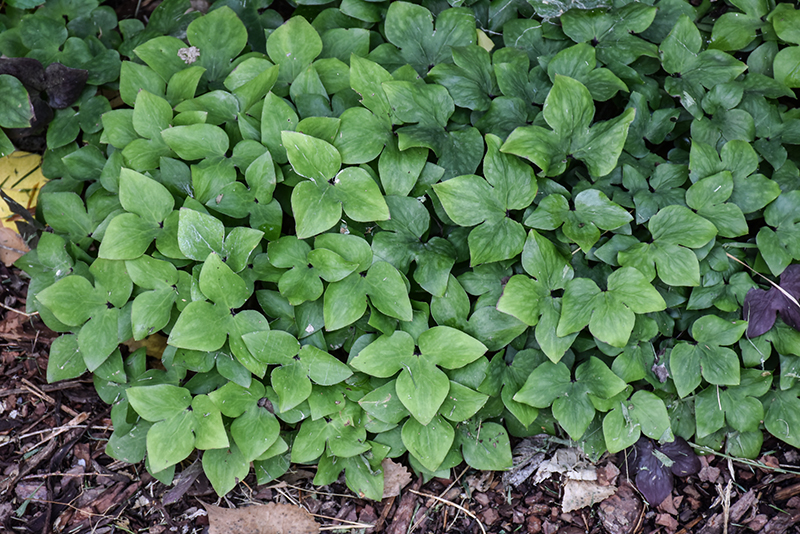Round-lobe Hepatica
Hepatica nobilis var. obtusa
Plant Height: 4 inches
Flower Height: 6 inches
Spacing: 4 inches
Sunlight:
![]()
![]()
Hardiness Zone: 3
Other Names: Liver Leaf
Description:
A slow growing, semi-evergreen variety producing white, pink, or lavender flowers in late winter to early spring; an undemanding addition to beds, borders, rocks gardens and containers; provides a pop of color when needed most; low maintenance
Ornamental Features
Round-lobe Hepatica's attractive lobed leaves emerge light green in spring, turning lime green in color with showy grayish green variegation on a plant with a spreading habit of growth. As an added bonus, the foliage turns gorgeous shades of burgundy, coppery-bronze and crimson in the fall. It has white buttercup flowers with lavender overtones and chartreuse eyes at the ends of the stems from late winter to mid spring, which are interesting on close inspection.
Landscape Attributes
Round-lobe Hepatica is an herbaceous evergreen perennial with a ground-hugging habit of growth. Its medium texture blends into the garden, but can always be balanced by a couple of finer or coarser plants for an effective composition.
This is a relatively low maintenance plant, and usually looks its best without pruning, although it will tolerate pruning. It has no significant negative characteristics.
Round-lobe Hepatica is recommended for the following landscape applications;
- Mass Planting
- Rock/Alpine Gardens
- Border Edging
- General Garden Use
- Groundcover
- Naturalizing And Woodland Gardens
- Container Planting
Planting & Growing
Round-lobe Hepatica will grow to be only 4 inches tall at maturity extending to 6 inches tall with the flowers, with a spread of 6 inches. When grown in masses or used as a bedding plant, individual plants should be spaced approximately 4 inches apart. Its foliage tends to remain low and dense right to the ground. It grows at a slow rate, and under ideal conditions can be expected to live for approximately 5 years. As an evegreen perennial, this plant will typically keep its form and foliage year-round.
This plant does best in partial shade to full shade. Keep it well away from hot, dry locations that receive direct afternoon sun or which get reflected sunlight, such as against the south side of a white wall. It is very adaptable to both dry and moist growing conditions, but will not tolerate any standing water. It is considered to be drought-tolerant, and thus makes an ideal choice for a low-water garden or xeriscape application. This plant does not require much in the way of fertilizing once established. It is particular about its soil conditions, with a strong preference for rich, acidic soils. It is quite intolerant of urban pollution, therefore inner city or urban streetside plantings are best avoided. Consider covering it with a thick layer of mulch in winter to protect it in exposed locations or colder microclimates. This species is native to parts of North America, and parts of it are known to be toxic to humans and animals, so care should be exercised in planting it around children and pets. It can be propagated by division.
Round-lobe Hepatica is a fine choice for the garden, but it is also a good selection for planting in outdoor pots and containers. Because of its spreading habit of growth, it is ideally suited for use as a 'spiller' in the 'spiller-thriller-filler' container combination; plant it near the edges where it can spill gracefully over the pot. Note that when growing plants in outdoor containers and baskets, they may require more frequent waterings than they would in the yard or garden.

